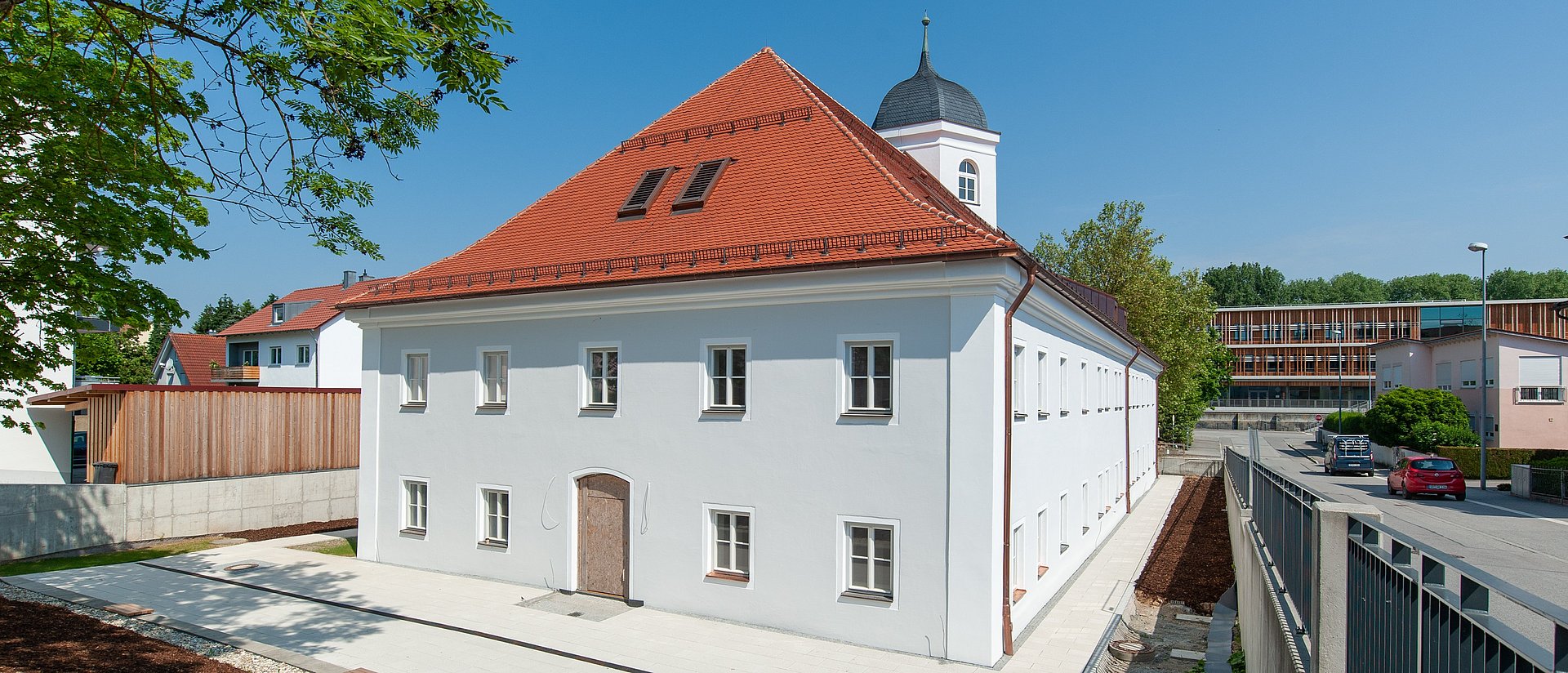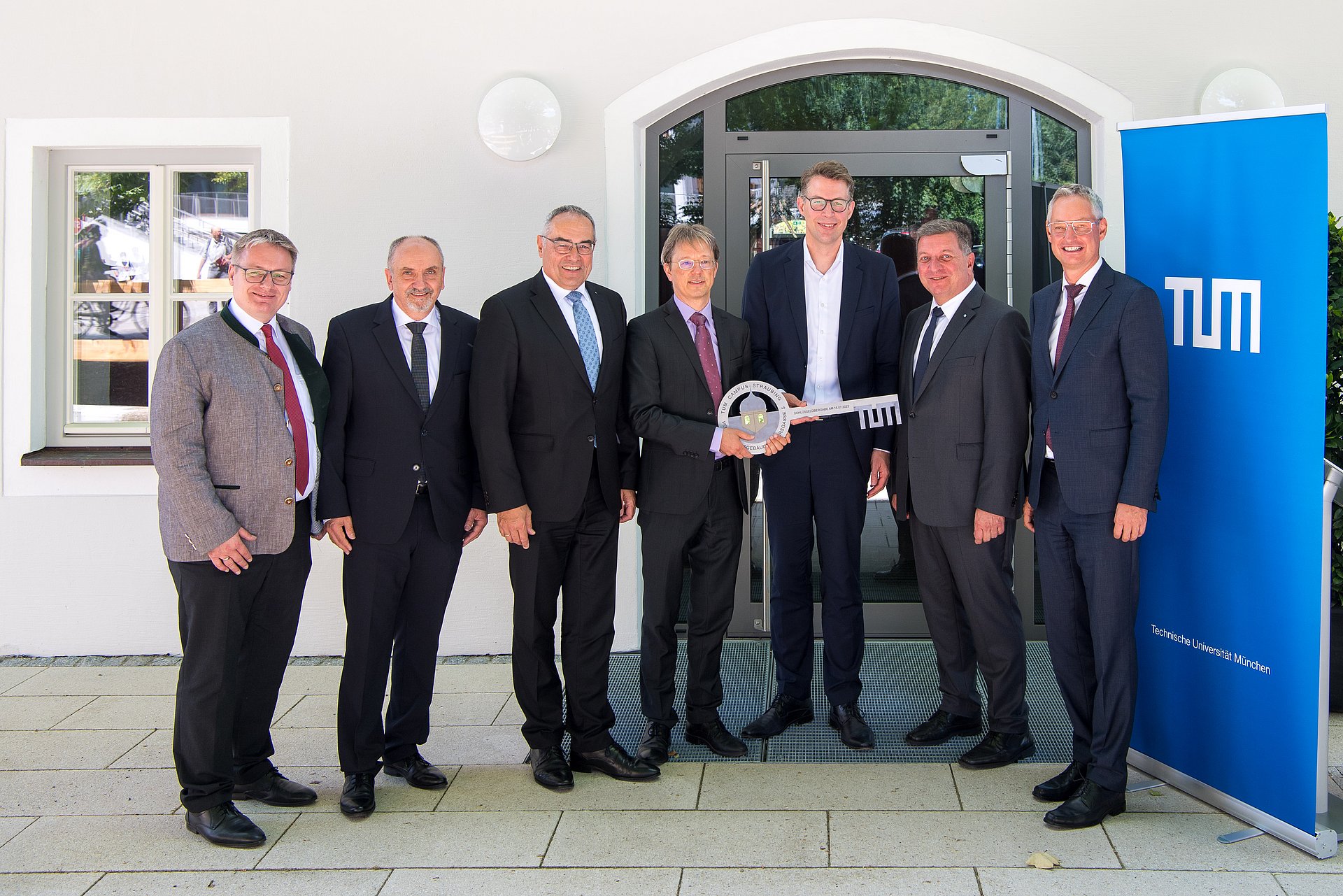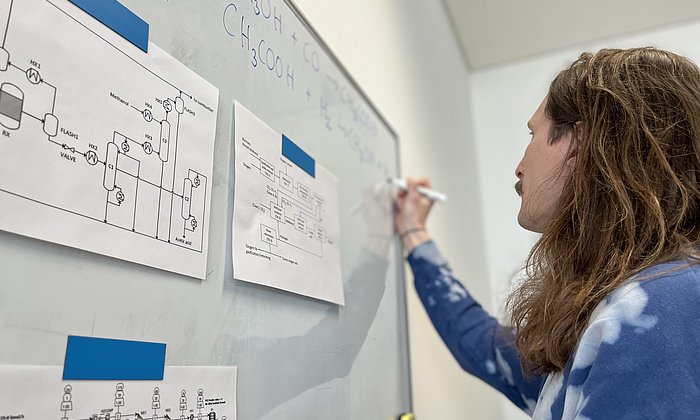Historical building reopened for teaching and administration
Key step in development of the TUM Campus Straubing

Since it was completed in April of this year, the building, situated just steps from the bank of the Danube in the heart of the TUM Campus Straubing, has served as the new home for the on-campus administration. The senior management, IT, facility management and the student advisory unit, among other functions, have already moved into their offices in the imposing two-storey hip-roofed structure. An outstanding feature is the 150 square meter lecture hall with seating for up to 100 students in the new rooftop space.
In his keynote address, Bavarian Minister of Science Markus Blume said: “The success story continues. The TUM Campus Straubing brings together the dominant themes of our time: autonomy, climate protection and sustainability. We have invested around 65 million euros here over the past few years. And with the Hightech Agenda we are staying on track with our investments. Lower Bavaria is a high-tech region. The TUM campus is at the heart of this innovation ecosystem. With the new building we are creating optimal infrastructure and have enhanced a cherished city landmark to new splendor.”
Geothermal energy
The refurbished building, with its notable “onion dome”, is listed as a protected architectural monument by the State of Bavaria. It has a remarkable history. The Franciscan order of monks established it as a municipal hospital at the beginning of the 18th century. Since then it has been used as a schoolhouse and as a facility for the disabled. Later the city of Straubing set up a youth center in the rooms. Shortly before completion of the refurbishment work to convert it into an administration building for the TUM Campus Straubing, the roof was destroyed by fire in October 2017. The resulting water and smoke damage made it necessary to demolition even the lower floors down to the bare shell. The costs for the initial refurbishment amounted to 4.5 million euros, with a further 4.8 million euros added through the subsequent reconstruction work.
In the refurbishment phase, which lasted around three years, the Passau state construction office made climate protection and sustainability a top priority. For example, around 30 geothermal storage probes will use a heat pump system to deliver the necessary heat energy for the building and provide the cooling for the server room and the new lecture hall.
Part of a successful bioeconomy
In his welcoming address, the Bavarian Minister of Construction Christian Bernreiter outlined the history and future of the building at Petersgasse 5: “This building was erected in around 1700 and has already been the home of many different facilities. I’m delighted that this protected structure will serve the purposes of research and teaching in the future. With a lecture hall under the roof and extensive office space, it is a key step in the expansion of the TUM campus and will boost the status of Lower Bavaria as a research location.”
TUM Chancellor Albert Berger said: “The thematic focus of the campus is aimed at the core of a future sustainable economy: how can we use regenerative resources with new biotechnology processes to create products and energy that can become part of a successful biotechnology through smart business models? To explore and teach this question, we are creating the optimal infrastructure in Straubing. That makes it even more important for the new and the refurbished historical buildings on campus to meet the highest sustainability standards.”





![[Translate to en:] Dawit T. Filmon, Elektrobiotechnologie TUM Straubing Dawit T. Filmon, Mitarbeiter von Prof. Nicolas Plumere, Professur für Elektrobiotechnologie am TUM Campus Straubing für Biotechnologie und Nachhaltigkeit, hält einen Ausgangsstoff für die Seitenketten des schützenden Polymers in seinen Händen.](/fileadmin/_processed_/0/9/csm_210507_Filmon_JW_05_2100_cfb4f91824.jpg)

